North Star Falling — Death rains from the sky over Moose Jaw, Saskatchewan (Part 2)
The Trans-Canada Airlines DC-4M North Star airliner that crashed in Moose Jaw, Saskatchewan in 1954 was a Canadian-made variant of the Douglas DC-4, the aircraft that became one of the most important workhorses in Ferry Command, the Royal Air Force organization designed to move personnel and war materiel from North America to the United Kingdom.1

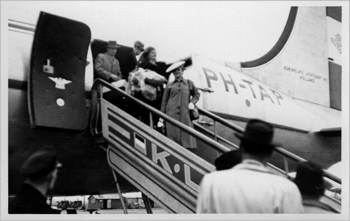
Ferry Command pilots pioneered routes and procedures that would become commonplace for civilian passengers after the war when surplus military transports were snapped up by airlines at bargain basement prices. The airlines converted C-54s and R5Ds to DC-4s, or purchased new DC-4s from Douglas, which continued production on 79 new DC-4s to meet demand.
Development of a variant: the Canadair DC-4M
Absorbing the Montreal operations of Canadian Vickers Ltd., Canadair Ltd. was created in 1944 as a manufacturer of PBY Canso flying boats for the RCAF. Still in effect was a contract to develop and produce a variant of the Douglas DC-4 transport.
The new Canadair DC-4M, powered by Rolls-Royce Merlin engines instead of radial piston engines to achieve a faster cruising speed, emerged in 1946 as the prototype DC-4M-1X North Star. It wasn’t just a “re-engined” DC-4, but utilized parts from the C-54 and DC-6, was shortened by two metres (80"), and had a different electrical system. Fifty-one of 71 DC-4Ms were pressurized, unlike the DC-4 or C-54.
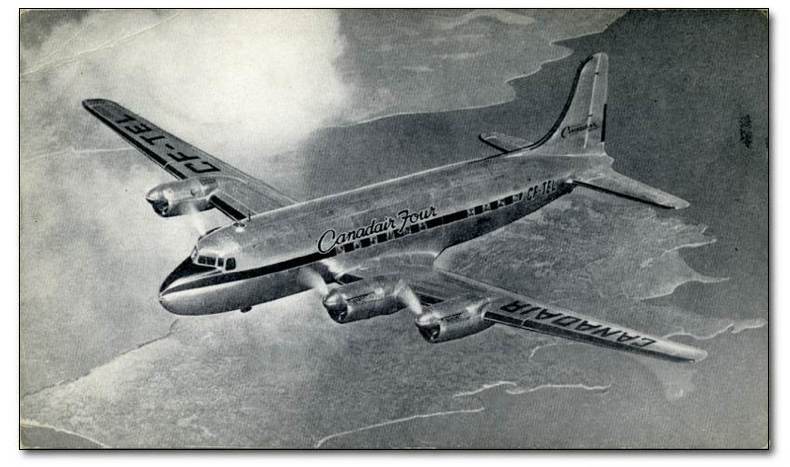
Trans-Canada Airlines used the North Star extensively on both its international and domestic routes. It was also flown by the RCAF, Canadian Pacific Airlines, and British Overseas Airways Corporation, providing reliable, if noisy, service through the 1950s and into the 1960s.
Propeller airline flights in the 1950s were not necessarily comfortable for passengers or crew. Cruising altitude was limited to 20,000 feet (6,100 metres), too low to avoid bad weather; passengers often endured airsickness brought on by turbulence. The message on the TCA North Star postcard shown below documents just such a flight; airlines commonly gave such postcards to passengers, and often mailed them, at their cost, as a courtesy.


The DC-4M on postage stamps
The Canadair DC-4M can be found only on stamps issued by Canada, Singapore, and Barbados. Canada has issued adhesive stamps in two designs, one of which had to be reprinted because it contained an error, and two aerograms (airletters). Singapore and Barbados each issued one stamp picturing the DC-4M.

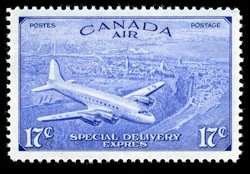
The airmail special delivery stamp shown at the left, which also appears in Part 1 of this web page, is the one that the Canadian Post Office Department had to reprint because of a design error.
Throughout Canada’s history, Francophile and Anglophile Canadians have struggled to accommodate their official policy of bilingualism. Unilingual federal politicians don’t stand a chance of being elected to high office, and federal civil servants are required to be bilingual. Thus, on September 16, 1946, when the Post Office Department issued its third airmail special delivery stamp, French speakers were quick to point out that the second “E” in the French word EXPRÊS at the bottom of the stamp included a circumflex accent (accent grave). That word does not exist in French. The correct spelling is EXPRÈS, with a grave accent (accent grave) over the second “E”.
The Post Office Department acted quickly, issuing a corrected version of the stamp on December 3, 1936. The corrected design is listed in most stamp catalogues as a separate issue.
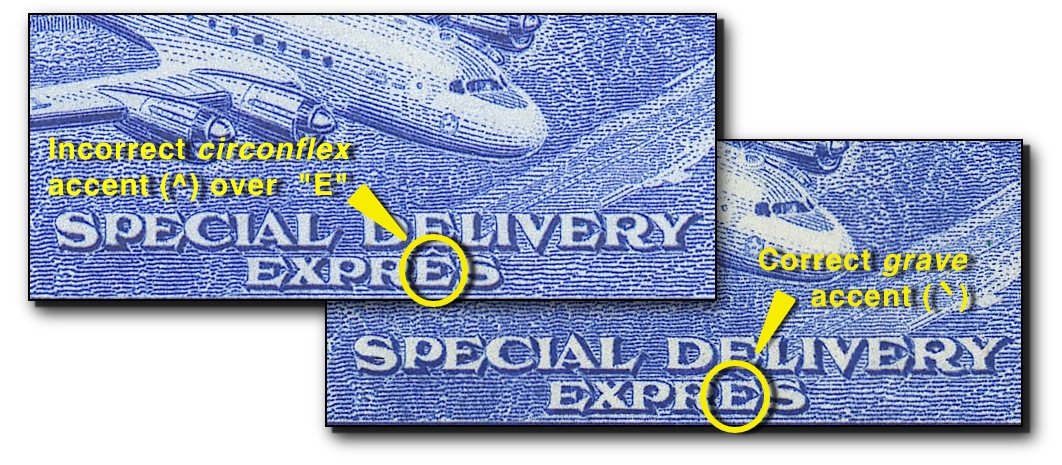
The Canadian aerograms (airletters) that picture the DC-4M include a 10-cent value with a blue stamp was issued in 1952, intended for domestic use, and a 15-cent value with a red stamp, issued in 1953 for use between Canada and United Kingdom and Europe.
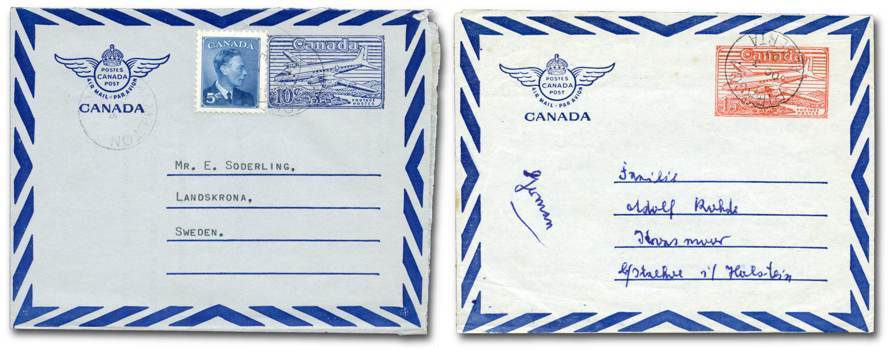
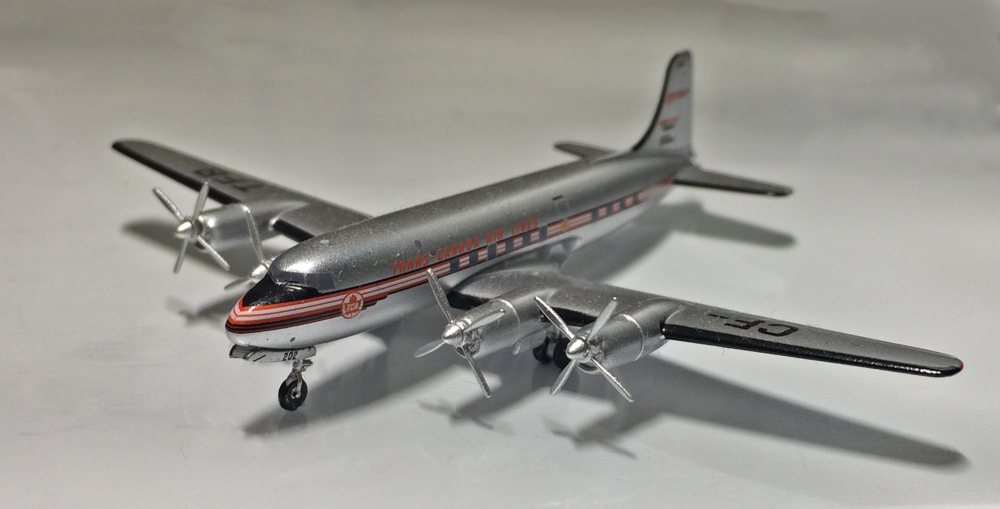
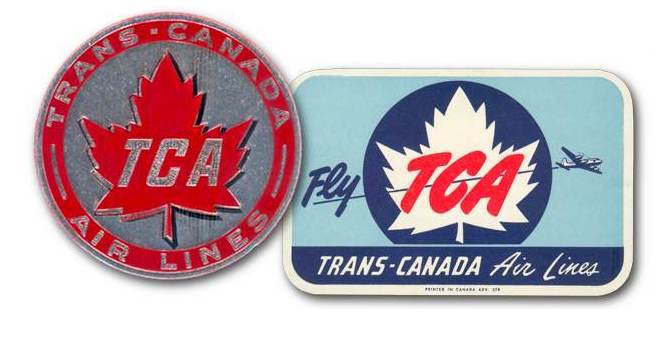
The North Star involved in the Moose Jaw collision was a C-4 variant of the original DC-4M, registered as CF-CPP, one of four built for Canadian Pacific Airlines and identical to the airliner that BOAC called the Argonaut. In 1948, CPA sold its C-4 Argonauts to TCA. Under TCA, they were re-named North Stars; CF-CPP was assigned Fleet #223, registered as CF-TFW.
At the time this web page was published (August, 2014) there were no North Stars in flying condition, and few surviving airframes. One, located at the Canada Aviation and Space Museum in Ottawa, is being restored by volunteers of the Project North Star Association Of Canada.
Next, in Part 3: During the Second World War, thousands of British Commonwealth fighter pilots learned their skills flying the Harvard, the Canadian variant of the famous AT-6 Texan trainer, and the same aircraft that collided with TCA Flight 9 over Moose Jaw.
-
Ferry Command was subsumed into the new Transport Command on 25 March 25, 1943 by being reduced to Group status as No. 45 (Atlantic Ferry) Group. ↩︎